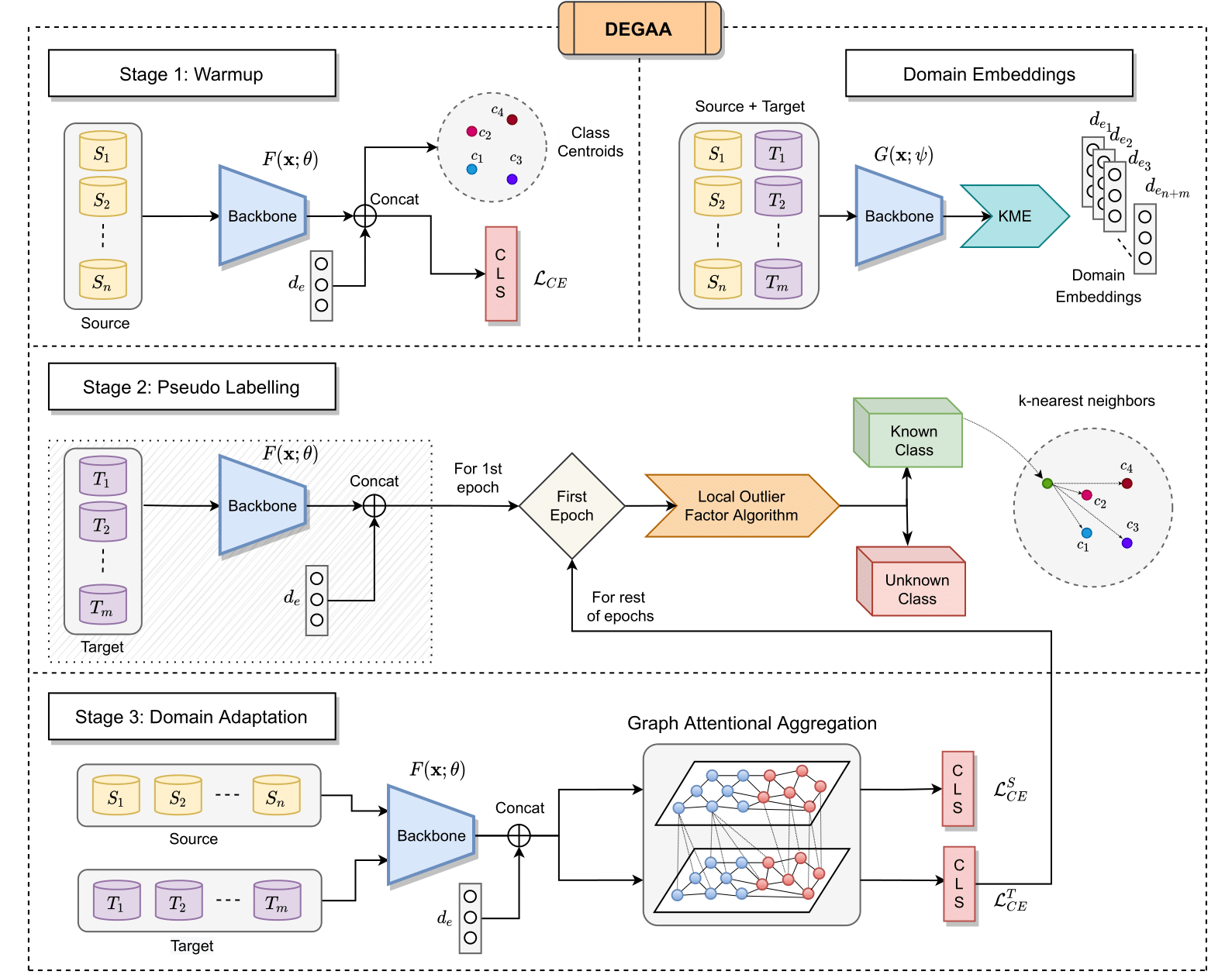Authors
Rohit Lal1, Arihant Gaur2, Aadhithya Iyer2, Muhammed Abdullah Shaikh2 and Ritik Agrawal2
1 Indian Institute of Science (IISc), Bangalore 2Visvesvaraya National Institute of Technology (VNIT), Nagpur
Abstract
Single-Source Single-Target Domain Adaptation (1S1T) aims to bridge the gap between a labelled source domain and an unlabelled target domain. Despite 1S1T being a well-researched topic, they are typically not deployed to the real world. Methods like Multi-Source Domain Adaptation and Multi-Target Domain Adaptation have evolved to model real-world problems but still do not generalise well. The fact that most of these methods assume a common label-set between source and target is very restrictive. Recent Open-Set Domain Adaptation methods handle unknown target labels but fail to generalise in multiple domains. To overcome these difficulties, first, we propose a novel generic domain adaptation (DA) setting named Open-Set Multi-Source Multi-Target Domain Adaptation (OS-nSmT), with n and m being number of source and target domains respectively. Next, we propose a graph attention based framework named DEGAA which can capture information from multiple source and target domains without knowing the exact label-set of the target. We argue that our method, though offered for multiple sources and multiple targets, can also be agnostic to various other DA settings. To check the robustness and versatility of DEGAA, we put forward ample experiments and ablation studies.
Architecture

Algorithm

BibTex
If you find our work useful please cite our paper.
@InProceedings{Lal_2021_NeurIPS,
author = {Lal, Rohit and Gaur, Arihant and Iyer, Aadhithya and Shaikh, Muhammed Abdullah and Agrawal, Ritik},
title = {Open-Set Multi-Source Multi-Target Domain Adaptation},
booktitle = {NeurIPS 2021 Workshop on Pre-registration in Machine Learning},
month = {December},
year = {2021},
url = {https://preregister.science/papers_21neurips/11_paper.pdf},
}